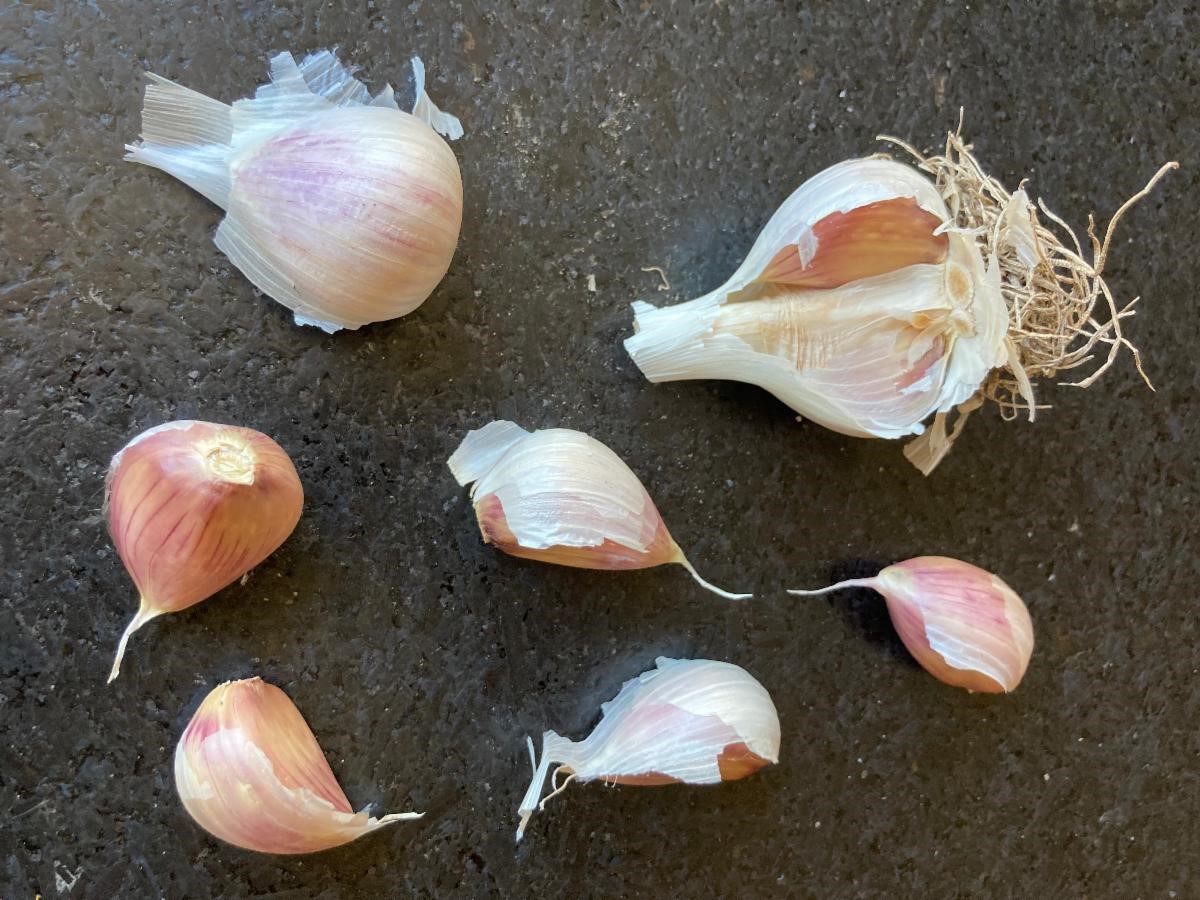Triple Nature of Garlic
Author: Ari LeVaux
Triple Nature of Garlic Ari LeVaux I still have a lot of garlic from last year’s harvest. So, to make sure I get through it all before the new crop comes in I have increased my consumption. Thanks to this project I’ve been cooking garlic as if it’s a vegetable, rather than a spice.
And given that garlic is plant material, but not a fruit or nut, it’s not wrong to call it a vegetable, even if we usually use it as a spice. It’s also an herb, believe it or not. We normally think of herbs as leafy plants, and while it may not look like it, a clove of garlic is actually an entire plant. The white fleshy part that we eat is a modified leaf, while the plant’s root and stem are confined to the scabby thing on the bottom of the clove. The center of that structure is the stem, and the bulbous ring around the stem is a set of baby roots. But the majority of the clove is technically a leaf.
This pungent leaf is not green, like most leaves, because it grows underground with no exposure to sunlight, so its cells do not make chlorophyll. But according to plant physiologists, it’s a leaf, which makes garlic an herb, as well as a spice and a vegetable.
To many garlic lovers, engaging the multitudes of garlic is a completely normal approach. In addition to its many taxonomic classifications, garlic can have several personalities in a meal, depending on how much heat it absorbs. When cooked long enough, garlic loses its spice and develops a resiny sweetness, while the food it’s cooked with gains a more savory flavor. If you overcook garlic it becomes bitter, so don’t do that. And when added raw, garlic imparts its lively spice. Thanks to all of these possible flavors, many people add garlic more than once to a meal, with whole cloves or large chunks going in early for savory sweetness, and minced garlic at the very end for a feisty hint of pizazz. Multiple garlic addition is a technique perfectly suited to my agenda of expedited garlic consumption.
One of my favorite ways to add garlic more than once is on pasta. Any sauce you could imagine serving over pasta -- be it marinara, clam sauce or carbonara -- is going to benefit from being cooked with garlic. And then I also add minced raw garlic, along with olive oil and perhaps grated cheese, to the hot, freshly cooked noodles, and toss it all together before I add the sauce. This is my standard pasta procedure even when I’m not trying to eat through my garlic at an accelerated clip. It’s just sound flavor management.
Another way that I like to use garlic more than once is in a simple Asian-style rice dish seasoned with soy sauce, sesame oil, and twice-added garlic. I start by cooking a pot of rice and add some whole garlic cloves to the pot when the rice is about half-cooked. The cloves steam atop the rice and get deliciously soft. When the rice is done, I toss the rice and cloves with freshly pressed or minced raw garlic and equal parts soy sauce and sesame oil. The hot rice cooks the raw garlic enough to blunt its edge, similar to what happens with the hot pasta, while it still retains plenty of firepower. Just remember when adding raw garlic that it will linger on your breath a lot longer than cooked, so check your calendar and use your judgment.
Another recipe in my enhanced garlic routine is oven-poached cloves in olive oil, along with potatoes and meat. I use deer meat, but use a recipe that I’ve adapted from a classic recipe for olive oil poached fish. You can use the protein of your choice.
Oven Poached Garlic, with choice of protein
You can also cook this recipe with fish, rather than meat. If doing so, reduce the heat to 275 before adding the fish, and cook the fish for about 25 minutes, or until flaky and done.
Serves two For the recipe, follow the link: https://arilevaux.com/3311-2/
Article Images
Click on Image Thumbnail(s) to view fullsize image
PhotoCredit: Ari Levaux
Image 1 Caption: Garlic
